-
 Bitcoin
Bitcoin $107,380.2492
-0.19% -
 Ethereum
Ethereum $2,496.4194
2.52% -
 Tether USDt
Tether USDt $1.0002
0.01% -
 XRP
XRP $2.2698
3.58% -
 BNB
BNB $658.6709
1.57% -
 Solana
Solana $156.2095
3.14% -
 USDC
USDC $1.0000
0.01% -
 TRON
TRON $0.2795
1.31% -
 Dogecoin
Dogecoin $0.1664
1.40% -
 Cardano
Cardano $0.5812
3.78% -
 Hyperliquid
Hyperliquid $40.8539
6.14% -
 Bitcoin Cash
Bitcoin Cash $513.3617
3.74% -
 Sui
Sui $2.7992
-0.38% -
 Chainlink
Chainlink $13.5045
1.13% -
 UNUS SED LEO
UNUS SED LEO $9.0369
-0.11% -
 Avalanche
Avalanche $18.0365
-0.20% -
 Stellar
Stellar $0.2401
1.74% -
 Toncoin
Toncoin $2.9395
2.20% -
 Shiba Inu
Shiba Inu $0.0...01148
-0.46% -
 Litecoin
Litecoin $86.8907
0.16% -
 Hedera
Hedera $0.1521
2.24% -
 Monero
Monero $320.1315
3.06% -
 Polkadot
Polkadot $3.4232
-0.02% -
 Dai
Dai $0.9999
0.01% -
 Bitget Token
Bitget Token $4.5549
-0.85% -
 Ethena USDe
Ethena USDe $1.0003
0.00% -
 Uniswap
Uniswap $7.2040
0.12% -
 Aave
Aave $277.8968
1.91% -
 Pepe
Pepe $0.0...09854
2.02% -
 Pi
Pi $0.5106
-3.03%
How to avoid frequent order withdrawals in API trading? Does Bybit have a limit on the number of API calls?
Frequent order withdrawals in API trading can lead to fees, restrictions, and bans; traders should implement error handling and monitor API usage to mitigate issues.
May 05, 2025 at 08:07 pm
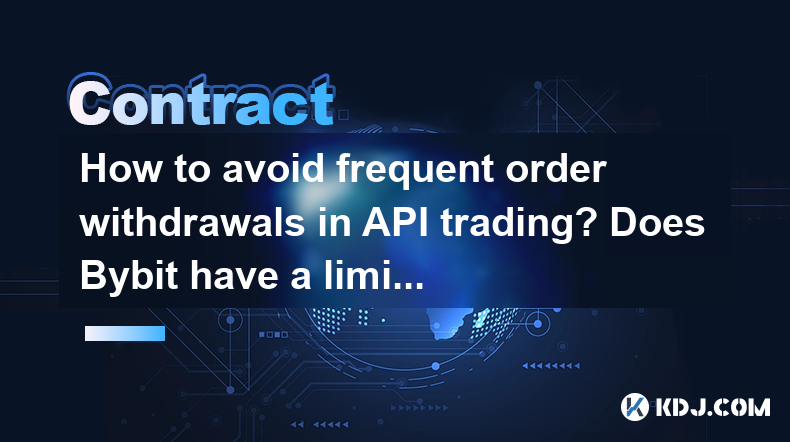
Understanding Frequent Order Withdrawals in API Trading
Frequent order withdrawals in API trading can lead to several issues, including increased transaction fees, potential account restrictions, and even temporary bans from trading platforms. These withdrawals often occur due to poorly designed trading algorithms or misconfigurations in the API settings. To mitigate these problems, traders need to understand the root causes and implement effective strategies.
Causes of Frequent Order Withdrawals
One of the primary reasons for frequent order withdrawals is algorithmic trading errors. These errors can stem from incorrect logic in the trading algorithm, leading to unintended orders being placed and subsequently withdrawn. Another common cause is network latency, where delays in data transmission can result in orders being placed and then canceled due to outdated market information. Additionally, API rate limiting can cause issues if the trading system exceeds the allowed number of API calls, leading to order cancellations.
Strategies to Avoid Frequent Order Withdrawals
To minimize the occurrence of frequent order withdrawals, traders can adopt several strategies. Implementing robust error handling in the trading algorithm can help catch and correct errors before they result in unnecessary orders. Using a buffer period before executing trades can account for network latency, ensuring that orders are placed with the most current market data. Monitoring API usage closely and adjusting the trading frequency to stay within the platform's limits can also prevent issues related to rate limiting.
Bybit's API Call Limits
Bybit, like many other cryptocurrency exchanges, imposes limits on the number of API calls to prevent abuse and ensure fair usage of their services. Bybit's API rate limits vary depending on the type of API call being made. For example, public API calls such as fetching market data have higher limits compared to private API calls like placing orders or withdrawing funds. Understanding these limits is crucial for traders to avoid hitting the cap and facing potential penalties.
Configuring API Settings on Bybit
To effectively manage API calls and avoid frequent order withdrawals, traders need to configure their API settings on Bybit correctly. Here are the steps to set up and manage API settings on Bybit:
- Log into your Bybit account and navigate to the API Management section.
- Create a new API key by clicking on the "Create New Key" button. You will need to provide a name for the key and set the permissions according to your trading needs.
- Set the IP access restrictions to enhance security. You can choose to allow access from all IPs or restrict it to specific IPs.
- Configure the API key's expiration date to ensure it remains valid for your trading activities.
- Save the API key and secret securely, as you will need these to connect your trading software to Bybit's API.
Monitoring and Adjusting API Usage
Once the API settings are configured, it's essential to monitor and adjust API usage to stay within Bybit's limits. Bybit provides tools and dashboards to track API usage, allowing traders to see how close they are to hitting the rate limits. If you notice that your trading system is approaching the limit, you can adjust the frequency of your API calls or implement a queueing system to manage the rate at which orders are placed and withdrawn.
Implementing Rate Limiting in Your Trading Algorithm
To further prevent frequent order withdrawals, traders can implement rate limiting within their trading algorithms. This involves setting a maximum number of API calls that can be made within a specific time frame. Here's how you can implement rate limiting:
- Determine the appropriate rate limit based on Bybit's API call limits and your trading strategy.
- Use a timer or counter within your trading software to track the number of API calls made.
- Implement a delay or pause in your algorithm if the rate limit is approached, allowing the system to reset before making more calls.
- Test the rate limiting mechanism thoroughly to ensure it works as intended without disrupting your trading activities.
Best Practices for API Trading on Bybit
To ensure smooth and efficient API trading on Bybit, traders should follow these best practices:
- Regularly review and update your trading algorithms to fix any errors that could lead to frequent order withdrawals.
- Use Bybit's testnet environment to test your trading strategies and API configurations before going live.
- Keep your API keys secure and never share them with unauthorized parties.
- Stay informed about Bybit's API policies and updates to ensure compliance and avoid any potential issues.
Frequently Asked Questions
Q: Can frequent order withdrawals affect my account status on Bybit?
A: Yes, frequent order withdrawals can lead to account restrictions or temporary bans on Bybit. The platform monitors trading activity to prevent abuse, and excessive order cancellations can trigger these measures.
Q: How can I check my current API usage on Bybit?
A: Bybit provides a dashboard in the API Management section where you can view your current API usage. This dashboard shows the number of API calls made and how close you are to hitting the rate limits.
Q: Are there any tools available to help manage API rate limits on Bybit?
A: Yes, Bybit offers tools and dashboards to monitor API usage. Additionally, traders can use third-party software or implement their own rate limiting mechanisms within their trading algorithms to manage API calls effectively.
Q: What should I do if I exceed Bybit's API call limits?
A: If you exceed Bybit's API call limits, you should immediately reduce the frequency of your API calls and implement a rate limiting mechanism in your trading algorithm. It's also advisable to contact Bybit's support team for guidance on how to proceed.
Disclaimer:info@kdj.com
The information provided is not trading advice. kdj.com does not assume any responsibility for any investments made based on the information provided in this article. Cryptocurrencies are highly volatile and it is highly recommended that you invest with caution after thorough research!
If you believe that the content used on this website infringes your copyright, please contact us immediately (info@kdj.com) and we will delete it promptly.
- SUI, TVL, BlockDAG: Navigating the Altcoin Landscape with Strategic Vision
- 2025-07-01 04:30:12
- BlockDAG, Cryptos, 2025 Trends: What's Hot and What's Not
- 2025-07-01 05:10:12
- Avalanche's Reign Challenged: Will Ruvi AI Lead the Next Bull Run?
- 2025-07-01 05:10:12
- Score Big with BetMGM Bonus: MLB, Soccer, and More!
- 2025-07-01 05:15:12
- Michael Saylor's Bitcoin Binge: What's Driving the $500 Million Purchase?
- 2025-07-01 04:30:12
- OKX and Binance Delist Trading Pairs: What's Going On?
- 2025-07-01 02:30:12
Related knowledge
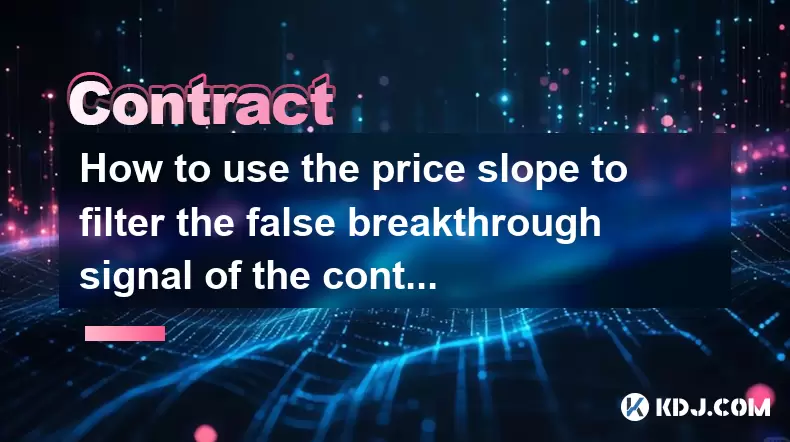
How to use the price slope to filter the false breakthrough signal of the contract?
Jun 20,2025 at 06:56pm
Understanding the Concept of Price Slope in Contract TradingIn contract trading, especially within cryptocurrency derivatives markets, price slope refers to the rate at which the price changes over a specific time period. It helps traders assess the strength and sustainability of a trend. A steep slope may indicate strong momentum, while a shallow slope...
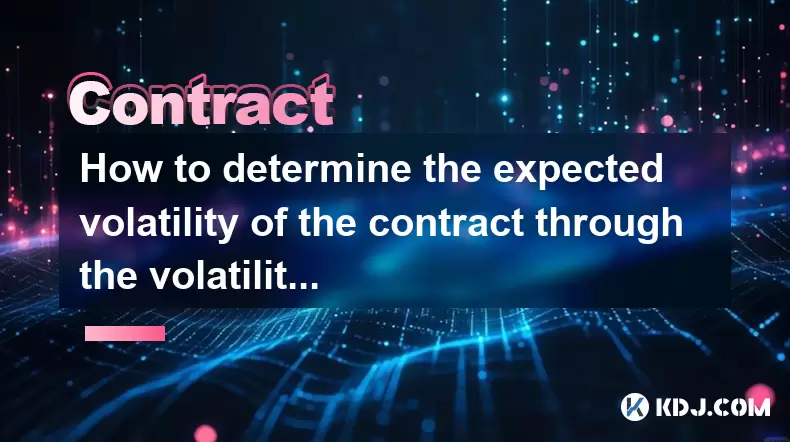
How to determine the expected volatility of the contract through the volatility cone?
Jun 19,2025 at 12:28pm
Understanding the Basics of Volatility in Cryptocurrency ContractsIn the realm of cryptocurrency trading, volatility is a key metric that traders use to assess potential risk and reward. When dealing with futures contracts, understanding how volatile an asset might become over time is crucial for position sizing, risk management, and strategy developmen...

How to formulate a contract intraday trading plan in combination with the pivot point system?
Jun 21,2025 at 03:42pm
Understanding the Basics of Pivot Points in Cryptocurrency TradingPivot points are technical analysis tools used by traders to identify potential support and resistance levels. These levels are calculated using the previous day's high, low, and closing prices. In the context of cryptocurrency trading, where markets operate 24/7, pivot points help trader...
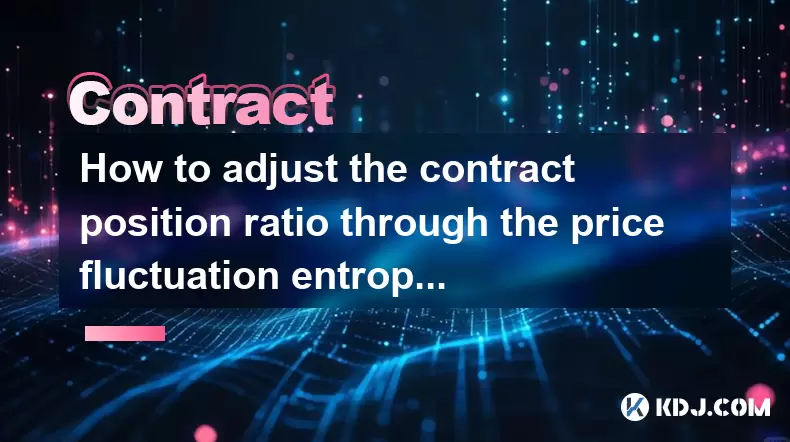
How to adjust the contract position ratio through the price fluctuation entropy?
Jun 22,2025 at 11:42am
Understanding Price Fluctuation Entropy in Cryptocurrency ContractsIn the world of cryptocurrency futures trading, price fluctuation entropy is a relatively new concept used to measure market volatility and uncertainty. It derives from information theory, where entropy refers to the degree of randomness or unpredictability in a system. In crypto contrac...
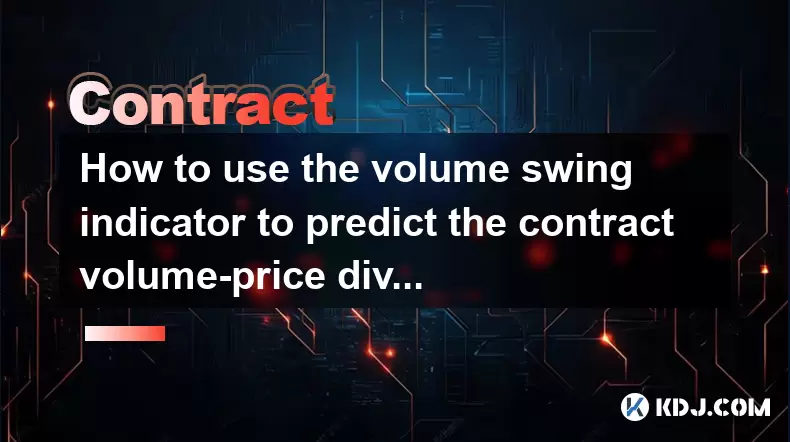
How to use the volume swing indicator to predict the contract volume-price divergence?
Jun 18,2025 at 11:42pm
Understanding the Volume Swing IndicatorThe volume swing indicator is a technical analysis tool used primarily in cryptocurrency trading to evaluate changes in volume over time. Unlike price-based indicators, this metric focuses solely on trading volume, which can provide early signals about potential market reversals or continuations. The key idea behi...

How to use the Gaussian channel to set the contract trend tracking stop loss?
Jun 18,2025 at 09:21pm
Understanding the Gaussian Channel in Cryptocurrency TradingThe Gaussian channel is a technical indicator used primarily in financial markets, including cryptocurrency trading, to identify trends and potential reversal points. It is based on statistical principles derived from the normal distribution, commonly known as the Gaussian distribution or bell ...

How to use the price slope to filter the false breakthrough signal of the contract?
Jun 20,2025 at 06:56pm
Understanding the Concept of Price Slope in Contract TradingIn contract trading, especially within cryptocurrency derivatives markets, price slope refers to the rate at which the price changes over a specific time period. It helps traders assess the strength and sustainability of a trend. A steep slope may indicate strong momentum, while a shallow slope...

How to determine the expected volatility of the contract through the volatility cone?
Jun 19,2025 at 12:28pm
Understanding the Basics of Volatility in Cryptocurrency ContractsIn the realm of cryptocurrency trading, volatility is a key metric that traders use to assess potential risk and reward. When dealing with futures contracts, understanding how volatile an asset might become over time is crucial for position sizing, risk management, and strategy developmen...

How to formulate a contract intraday trading plan in combination with the pivot point system?
Jun 21,2025 at 03:42pm
Understanding the Basics of Pivot Points in Cryptocurrency TradingPivot points are technical analysis tools used by traders to identify potential support and resistance levels. These levels are calculated using the previous day's high, low, and closing prices. In the context of cryptocurrency trading, where markets operate 24/7, pivot points help trader...

How to adjust the contract position ratio through the price fluctuation entropy?
Jun 22,2025 at 11:42am
Understanding Price Fluctuation Entropy in Cryptocurrency ContractsIn the world of cryptocurrency futures trading, price fluctuation entropy is a relatively new concept used to measure market volatility and uncertainty. It derives from information theory, where entropy refers to the degree of randomness or unpredictability in a system. In crypto contrac...

How to use the volume swing indicator to predict the contract volume-price divergence?
Jun 18,2025 at 11:42pm
Understanding the Volume Swing IndicatorThe volume swing indicator is a technical analysis tool used primarily in cryptocurrency trading to evaluate changes in volume over time. Unlike price-based indicators, this metric focuses solely on trading volume, which can provide early signals about potential market reversals or continuations. The key idea behi...

How to use the Gaussian channel to set the contract trend tracking stop loss?
Jun 18,2025 at 09:21pm
Understanding the Gaussian Channel in Cryptocurrency TradingThe Gaussian channel is a technical indicator used primarily in financial markets, including cryptocurrency trading, to identify trends and potential reversal points. It is based on statistical principles derived from the normal distribution, commonly known as the Gaussian distribution or bell ...
See all articles

























































































